The Significance Of Pin Positions At Augusta
Here we take a look at the significance of pin positions on every hole at Augusta National


The Significance Of Pin Positions At Augusta
Augusta National, home of The Masters, is one of golf’s most versatile courses.
The stats from the 2021 tournament show some incredible variations in the difficulty ranking of holes from one day of competition to another. To a certain extent this is down to changing winds and tees moving up or back, but more significantly, the difference is because of shifting pin positions. On a number of holes at Augusta the tournament committee has the power to turn a realistic birdie chance into a potential banana skin, simply by moving the flag by as little as five yards.
Here we look at each of the holes at Augusta and consider the significance of certain pin locations at each of them.
Hole 1 (Tea Olive)

The 1st green
2021 Toughest Day: Round 2 – 4.25, Rank 5th (pin front left)
Easiest Day: Round 4 – 4.17, Rank 9th (pin mid right)
When the pin is in the back left portion of the green, anything just beyond will fall off the back, leaving an incredibly difficult shot with everything sloping away towards the front of the putting surface. Front left is also tough to access.
If the flag is on the right, it’s far easier to attack with less risk. There’s also a small backstop behind the flag when the pin is middle to front of the right side.
Subscribe to the Golf Monthly newsletter to stay up to date with all the latest tour news, equipment news, reviews, head-to-heads and buyer’s guides from our team of experienced experts.
Hole 2 (Pink Dogwood)
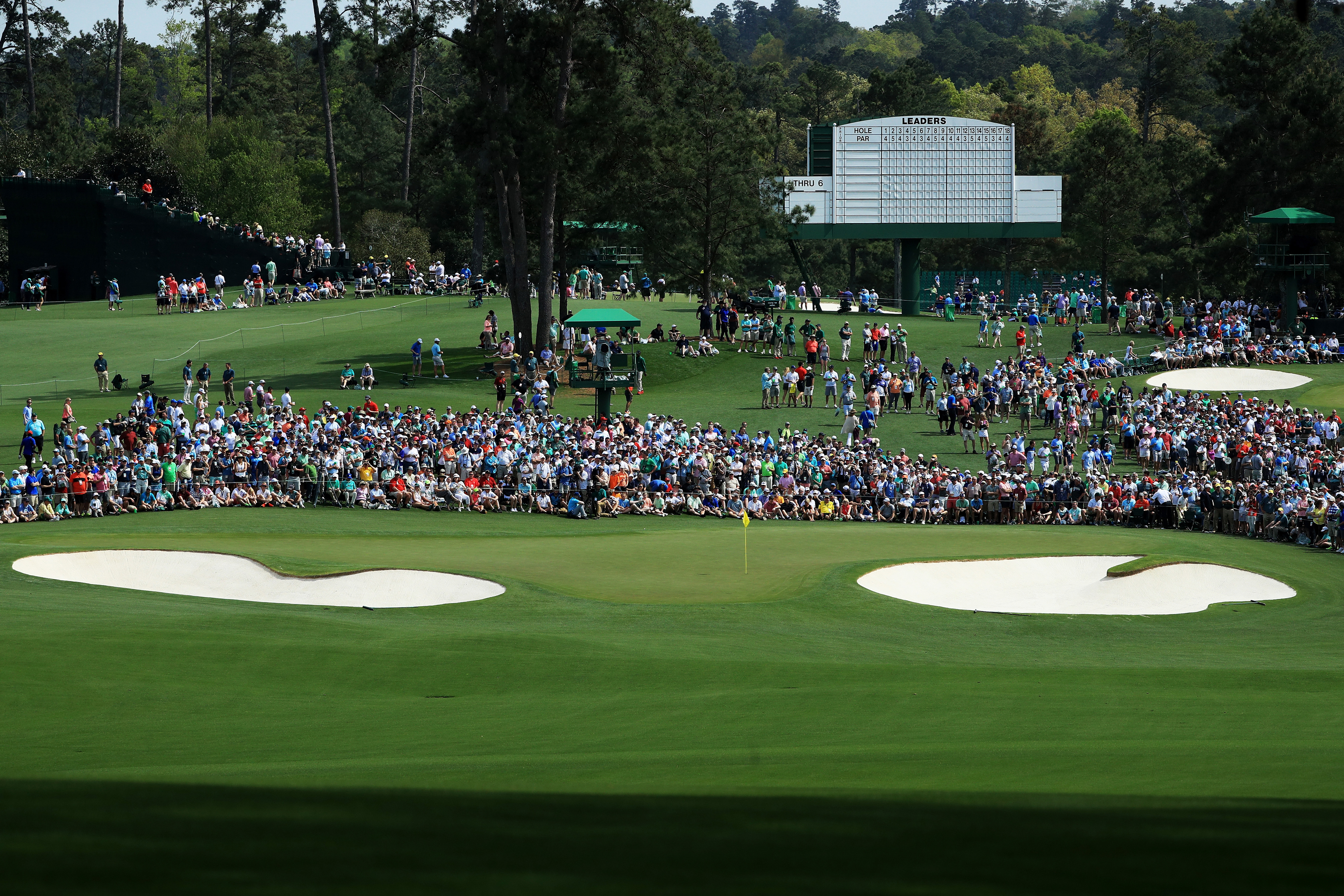
2nd green
2021 Toughest Day: Round 2 – 4.59, Rank 16th (pin back middle)
Easiest Day: Round 4 – 4.30, Rank 18th (pin right)
This green slopes from left to right so a pin towards the right hand side is more easily reached. It tends to be tucked back right, behind the bunker in round 4. If a second shot catches the right part of the green, it will feed round to this flag location – see Louis Oosthuizen’s 2012 albatross.
When back left, the flag is almost impossible to get at in two blows. Most will aim to play their second shot to the right side of the fairway to pitch back up the green towards the flag.
Hole 3 (Flowering Peach)
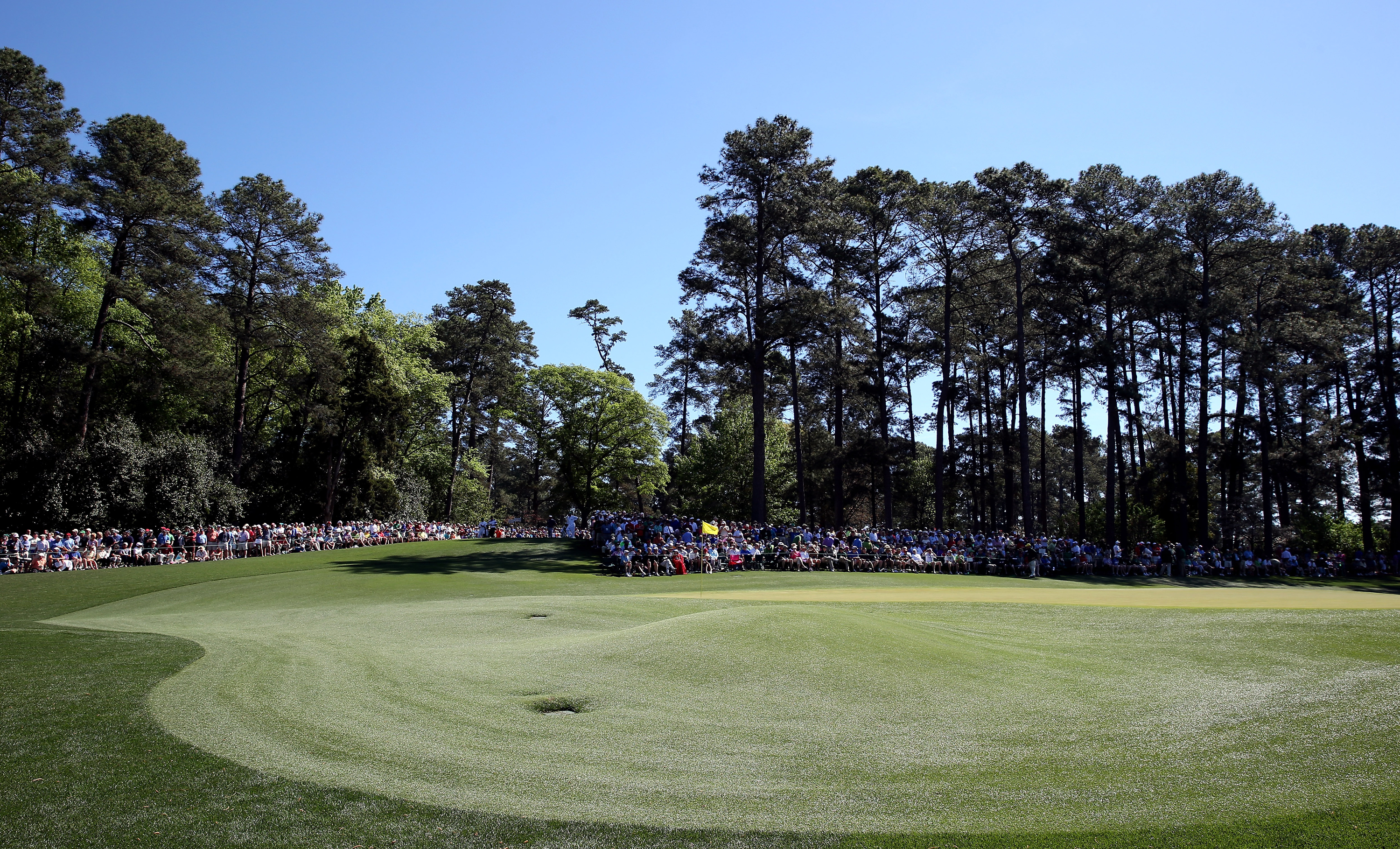
The 3rd green
2021 Toughest Day: Round 4 – 4.24, Rank 6th (pin front left)
Easiest Day: Round 3 – 3.70, Rank 16th (pin front right)
The difficulty of this hole can be hugely ramped up by the hole location – a full half a shot between Saturday and Sunday in 2021.
On Saturday last year the flag was front right and the players were able to attack it.
On Sunday, the pin was placed on a very narrow section of the front left of the green. Anything going long left an incredibly difficult pitch back while, a ball spinning too much could zip off the green short or to the left: minimal margin for error.
Hole 4 (Flowering Crab Apple)
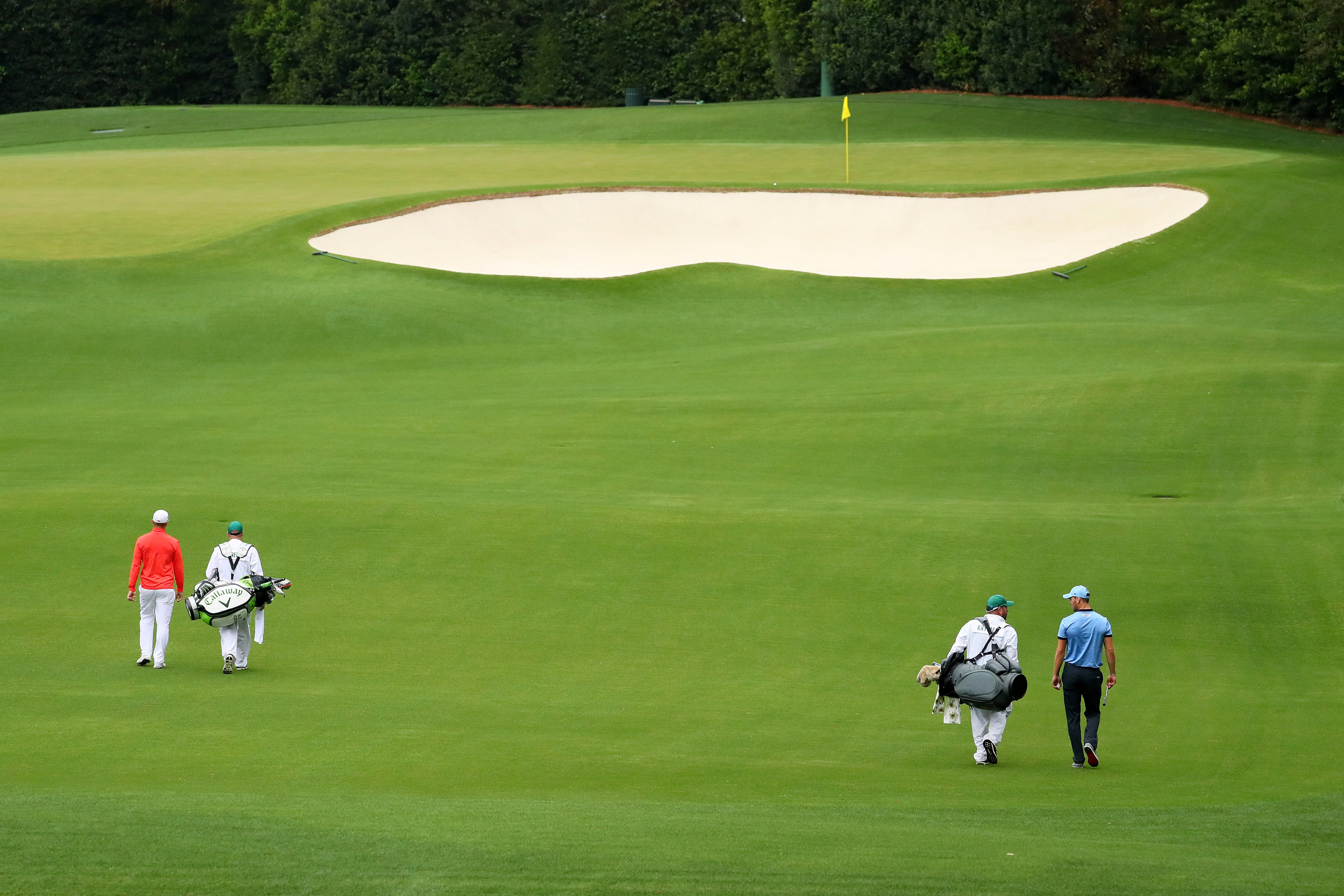
4th green
2021 Toughest Day: Round 3 – 3.46, Rank 2nd (pin front)
Easiest Day: Round 2 – 3.26, Rank 5th (pin back left)
This short hole provides a great case in point. When the flag is in the front section of the green, on the narrow portion between the two bunkers, it’s incredibly difficult to get the ball close, there’s only the tiniest margin for error either left or right. If a player does err laterally, the shot from in (or around) either of those bunkers is devilishly difficult – trying to flip the ball up and stop it on an area of green about the size, and speed, of a snooker table. In round three last year, this was the second hardest hole on the course
If the pin is at the back of the green, as it was in round 2 last year, there’s far more space to miss on either side and, if it happens, the up-and-down is far more feasible with more green to work with.
Hole 5 (Magnolia)
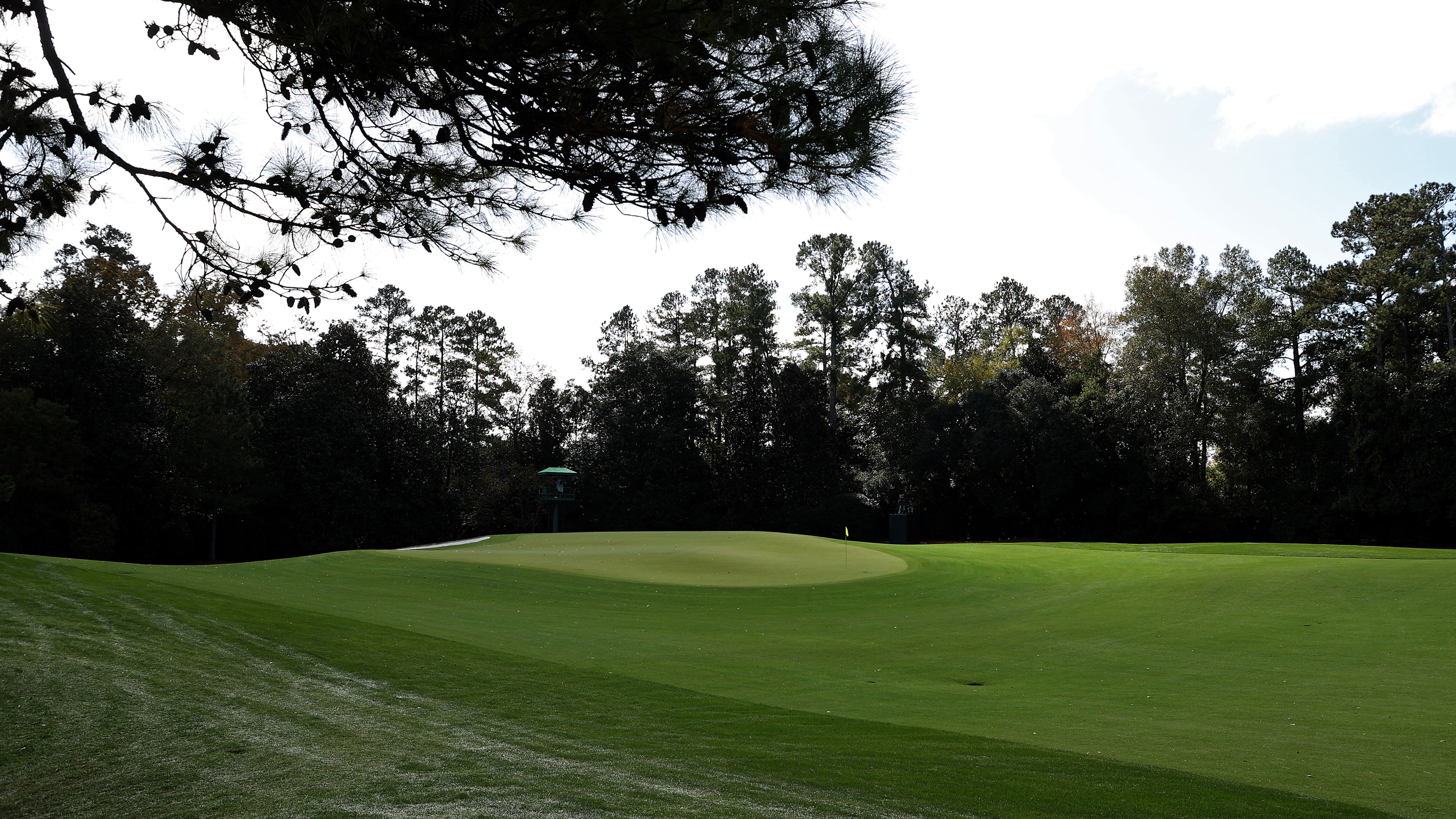
The 5th green
2021 Toughest Day: Round 2 – 4.46, Rank 1st (pin front left)
Easiest Day: Round 4 – 4.35, Rank 2nd (pin middle)
This hole is incredibly tough wherever the pin is situated. It ranked as either the hardest or second hardest hole every day in 2021. The toughest day was round two when the pin was set tight to the left side with very little room to work with. Even on Sunday, with the pin pretty central in the green, the hole averaged 0.35 over par. It’s one to try to get past with par and breathe a sigh of relief.
Hole 6 (Juniper)

6th green
2021 Toughest Day: Round 2 – 3.31, Rank 2nd (pin back right)
Easiest Day: Round 3 – 2.87, Rank 13th (pin front left)
In round 2 last year, the pin was perched on a shelf on the back right side. It was incredibly difficult to get the ball to stay there, hence it being the 2nd hardest hole of the day. Then, a day later, the pin was front left where the ball tends to feed towards. With that assistance, it played almost half a shot easier.
Hole 7 (Pampas)

Bubba Watson walks up to the 7th green
2021 Toughest Day: Round 3 – 4.56, Rank 1st (pin front centre-left)
Easiest Day: Round 1 – 4.24, Rank 8th (pin back centre left)
On Saturday last year, the pin was at the front of the green, just over the bunkers – extremely difficult to get at. A fraction short meant sand, a hair right and the ball drifted away to the front right of the green, just long resulted in an incredibly slippery putt, chip or bunker shot back down the slope. It was the toughest hole fo the day.
Easiest was round 1 when the pin was at the back but it’s also more forgiving in its traditional Sunday spot - the lower front-right of the green with everything filtering down towards it. So there’s a far bigger target to aim for and still get the ball close.
Hole 8 (Yellow Jasmine)

The 8th green
2021 Toughest Day: Round 4 – 4.78, Rank 15th (pin back left)
Easiest Day: Round 3 – 4.39, Rank 18th (pin centre)
This one doesn’t vary hugely in terms of ranking but when the pin is in the centre of the green, as in round 3 last year, this is often the easiest hole on the course, as the ball tends to feed in towards the cup.
Hole 9 (Carolina Cherry)
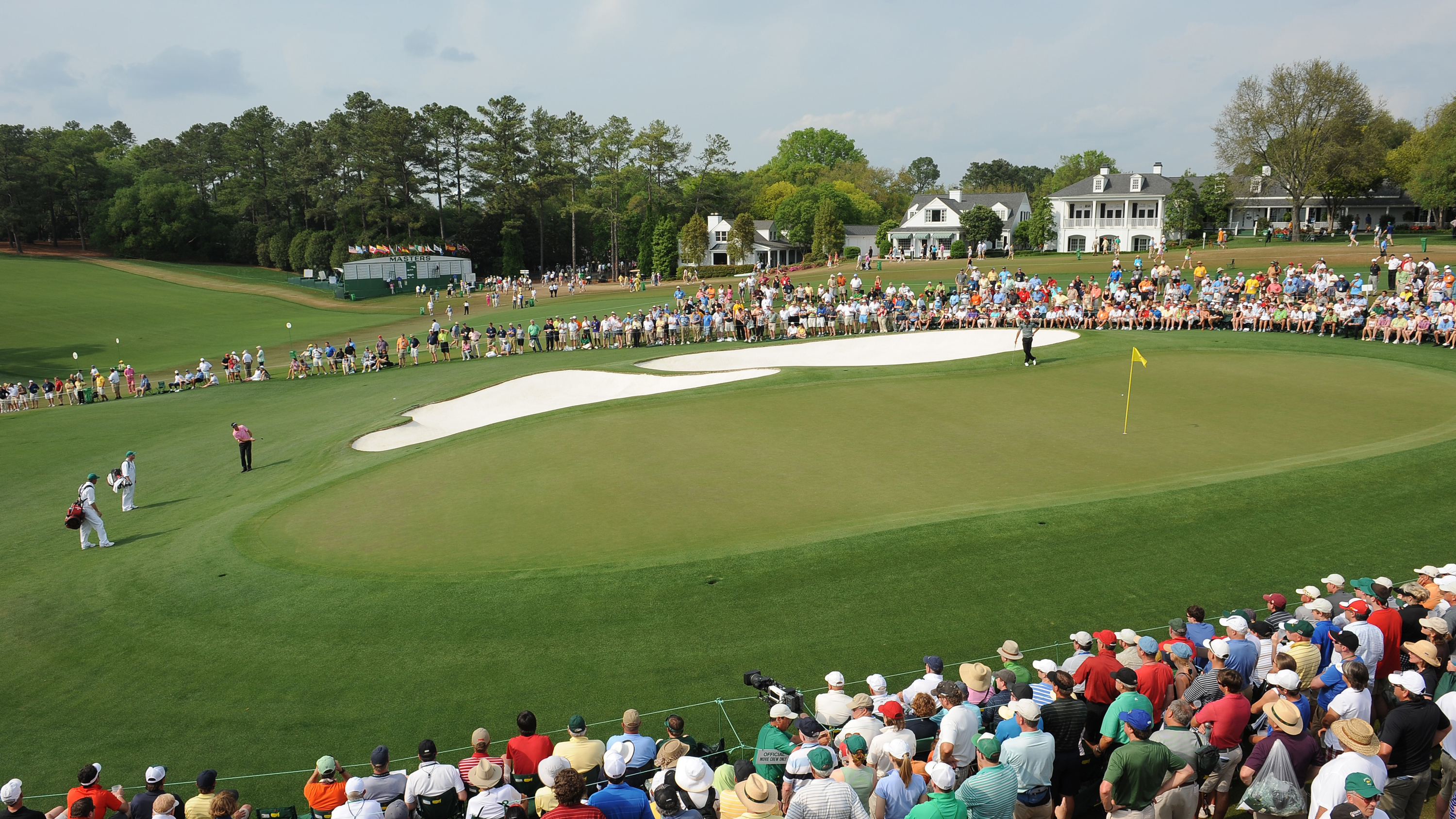
The testing 9th green
2021 Toughest Day: Round 1 – 4.24, Rank 9th (pin middle left)
Easiest Day: Round 4 – 3.98, Rank 13th (pin front right)
It’s extremely difficult to get close to this flag when it’s way up in the back left portion of this green. It’s a small target protected by a bunker in front so it’s easy to go long, leaving a treacherous chip back down the slope.
When the pin is more central, anything beyond the flag will tend to filter back towards the hole. Players will generally face an uphill putt and enjoy a more reasonable birdie chance.
On the final day, the pin is normally positioned at the front left of the putting surface and anything spinning too much will head down off the green in the style of Greg Norman in 1996. Beyond the flag to the right, players face an incredible putt. This is where you’ll see them starting the ball at right angles to the cup and crossing their fingers that it will stay on the putting surface.
Hole 10 (Camellia)
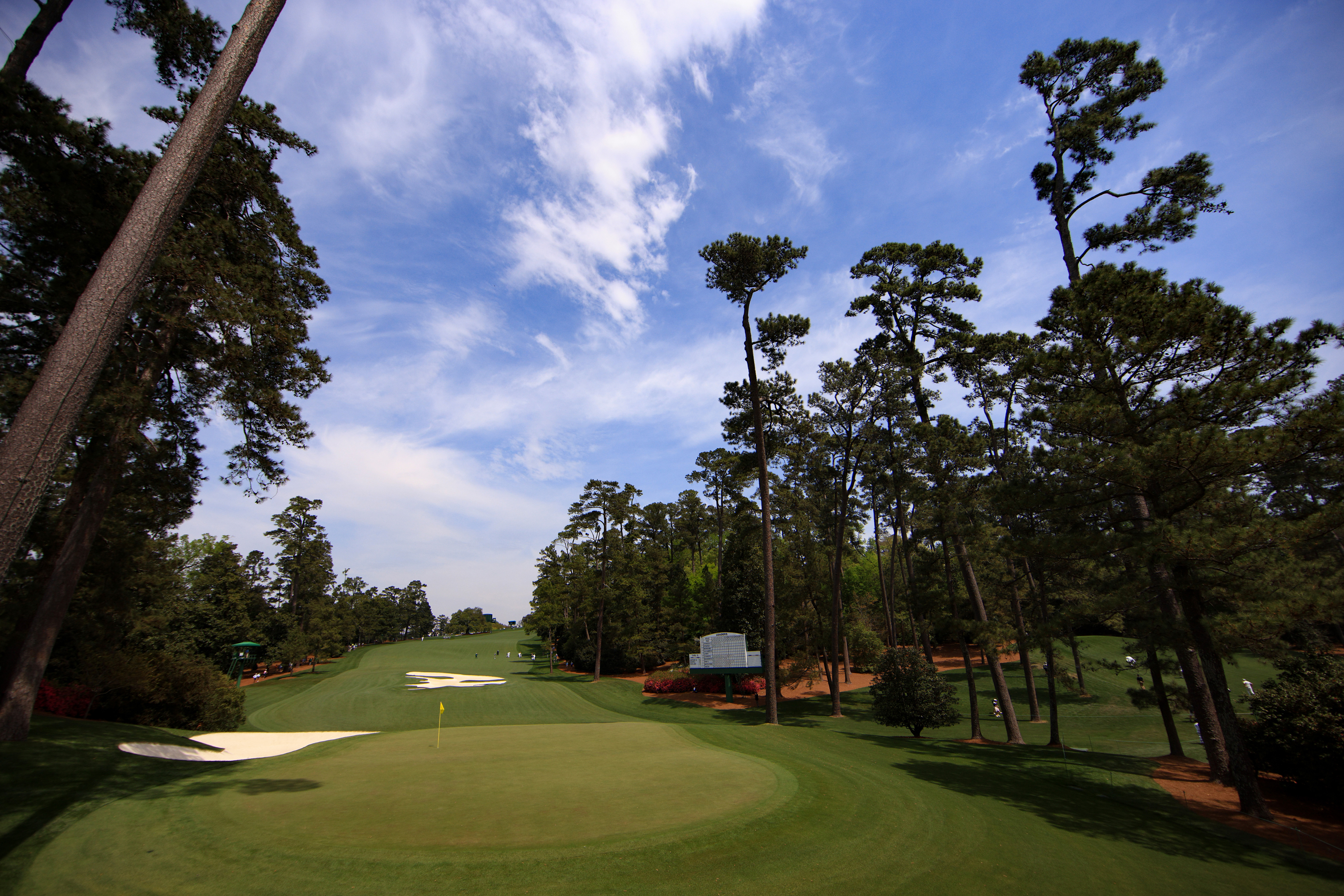
The 10th green
2021 Toughest Day: Round 1 – 4.33, Rank 3rd (pin centre right)
Easiest Day: Round 3 – 4.13, Rank 6th (pin front right)
If the pin is in the front left portion of the green, the ball naturally gathers to it. If the pin is up the back of the green, towards the left side, it’s hard to get the ball all the way back to the flag and missing left or right at the back half of the green leaves a nightmarish shot. When the pin is on the right it can leave an uphill putt but getting close is tough with a bunker protecting the front right side. Last year, the hole yielded only 34 birdies all week.
Hole 11 (White Dogwood)
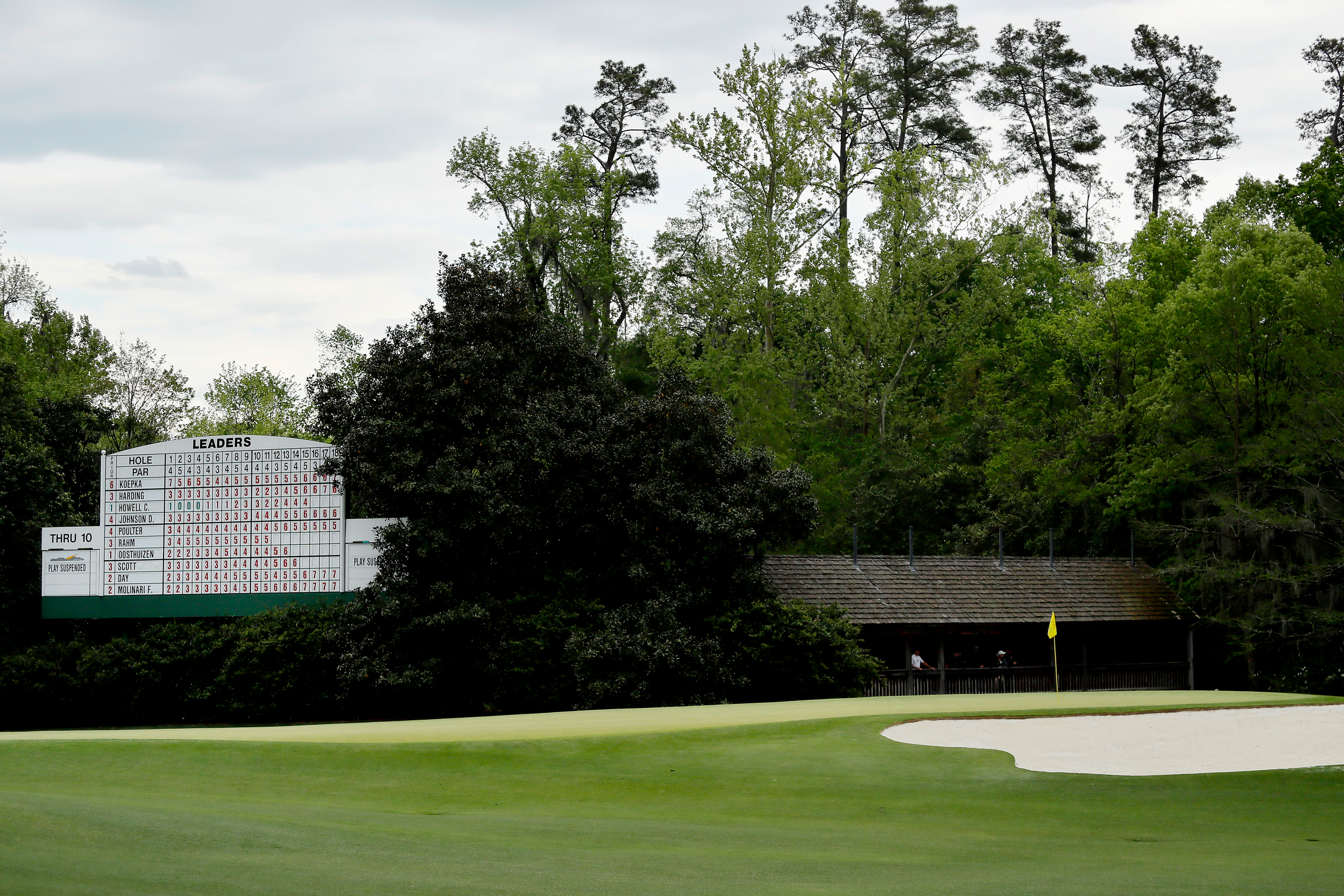
The 11th green
2021 Toughest Day: Round 1 – 4.51, Rank 1st (pin back left)
Easiest Day: Round 2 – 4.31, Rank 2nd (pin front)
This is the hardest hole on the course, particularly when the pin is positioned to the left side of this green. Going at the flag is only for the very bravest as it brings the water into play. So you tend to see players bailing out to the right side. When the pin is way over on the left, this leaves a testing chip across a lightning-fast surface with water waiting on the other side.
But, it’s still very testing when the pin is on the right side as a bail out to the right of the green leaves a very delicate shot to get the ball close to the cup… This one is just very, very tough.
Hole 12 (Golden Bell)

12th green
2021 Toughest Day: Round 1 – 3.16, Rank 11th (pin middle)
Easiest Day: Round 3 – 3.04, Rank 9th (pin front left)
Wherever the pin is on this hole, it’s extremely challenging and it’s really the wind rather than pin position that makes for the difficulty factor on this one. In fact, last year it stayed pretty consistently around the middle ranked in terms of toughness – 9th to 11th.
Hole 13 (Azalea)
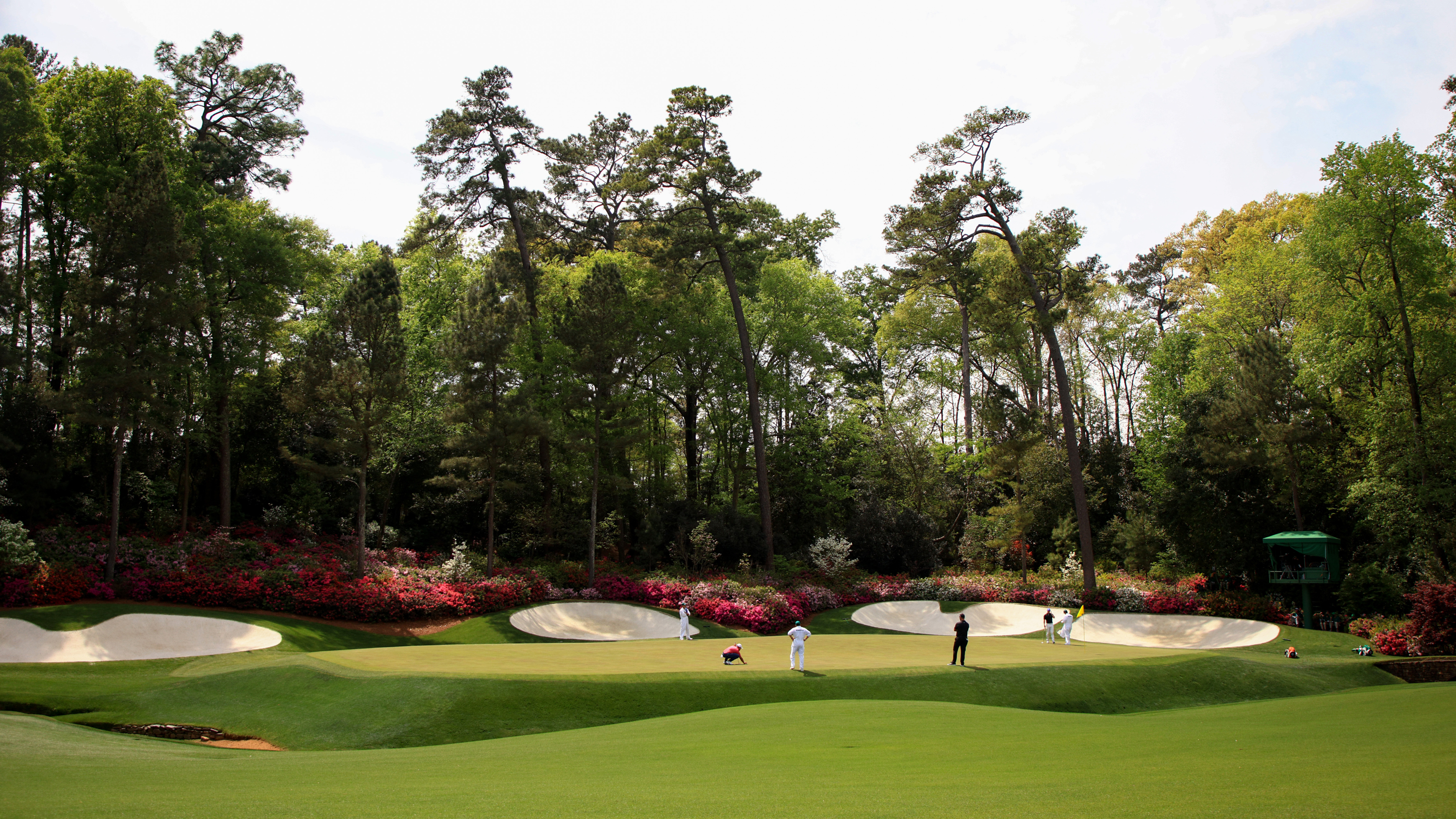
13th green
2021 Toughest Day: Round 3 – 4.85, Rank 14th (pin front)
Easiest Day: Round 2 – 4.49, Rank 18th (pin front)
This hole is one of the easiest holes on the course by ranking no matter where the pin is positioned. However, when it’s in the front portion of the green, as it tends to be on the final day, the players view it as a must-birdie. The green slopes from back to front and left to right and, when the pin is in the front section, shots fired into the middle of the putting surface will feed down to it: Remember Seve’s second shot to set up a last round eagle in 1986? There were two eagles and 31 birdies on this hole during the final round in 2021.
When the flag is up at the back of the putting surface, either on the left or right side, it’s extremely difficult to get the ball close to it. And the last thing you want to do is go long. From through the green with the pin at the back, it’s nigh on impossible to get the ball onto the putting surface and stop it before it takes the slope and disappears to the front of the green.
Hole 14 (Chinese Fir)

14th green
2021 Toughest Day: Round 1 – 4.17, Rank 10th (pin left)
Easiest Day: Round 4 – 3.81, Rank 14th (pin back)
This green on this hole slopes viciously from its centre to the right side. So the most difficult pin position is when the flag is perched just at the top of that slope. Anything aimed just right of the flag will drift away to the bottom section of the green. If a ball misses the green long or left, the shot back is fraught with danger as, if struck too hard, it will fall away to the lower part of the putting surface.
When the pin is on the right side, the hole is far more accessible. If a player is able to get the distance right then there’s a wide target to aim for, from where the ball will roll down towards the flag. One to attack.
Hole 15 (Firethorn)

The 15th green
2021 Toughest Day: Round 1 – 4.91, Rank 15th (pin front right)
Easiest Day: Round 2 – 4.64, Rank 14th (pin centre left)
One of the great birdie chances on the run for home at Augusta, the positioning of the pin doesn’t have a huge impact on the scoring average on this par-5. But a flag towards the back of the green certainly makes eagles and birdies a more viable possibility. If the pin is at the front it takes a very bold shot to get near in two. And going at it with a pitch brings the risk of spinning back into the water.
However, when the pin is at the back, firing long brings its own difficulties, as pitching back towards a back flag from through the putting surface is a challenging ask.
Hole 16 (Redbud)

The 16th green
2021 Toughest Day: Round 4 – 3.1, Rank 11th (pin back left)
Easiest Day: Round 3 – 2.94, Rank 12th (pin front right)
The green on this par 3 slopes hugely from right to left so when the pin is on the left side (as it always is on the final day – think Tiger Wood’s miracle chip in 2005,) the ball will filter down towards it. If a player gets the length of his tee shot right and finds any part of the putting surface from the centre to the left side, he’ll have a realistic birdie chance.
When the pin is up on the back right portion or the front right portion, the tee shot must be extremely precise to avoid falling away from the cup and down the slope. Right pins require the player to land the ball within a few feet of the flag on either side to avoid a very tricky second. Last year’s stats don’t quite tell the full story on this one!
Hole 17 (Nandina)

17th green
2021 Toughest Day: Round 4 – 4.28, Rank 3rd (pin back right)
Easiest Day: Round 3 – 3.98, Rank 11th (pin back left)
This is one of the most challenging greens on the course and pin positioning makes a massive difference here. The right side tends to be easier with the ball feeding down in that direction. But, last year on Saturday the pin was tight to the left and that yielded a few more birdies – 10 on the day.
Hole 18 (Holly)
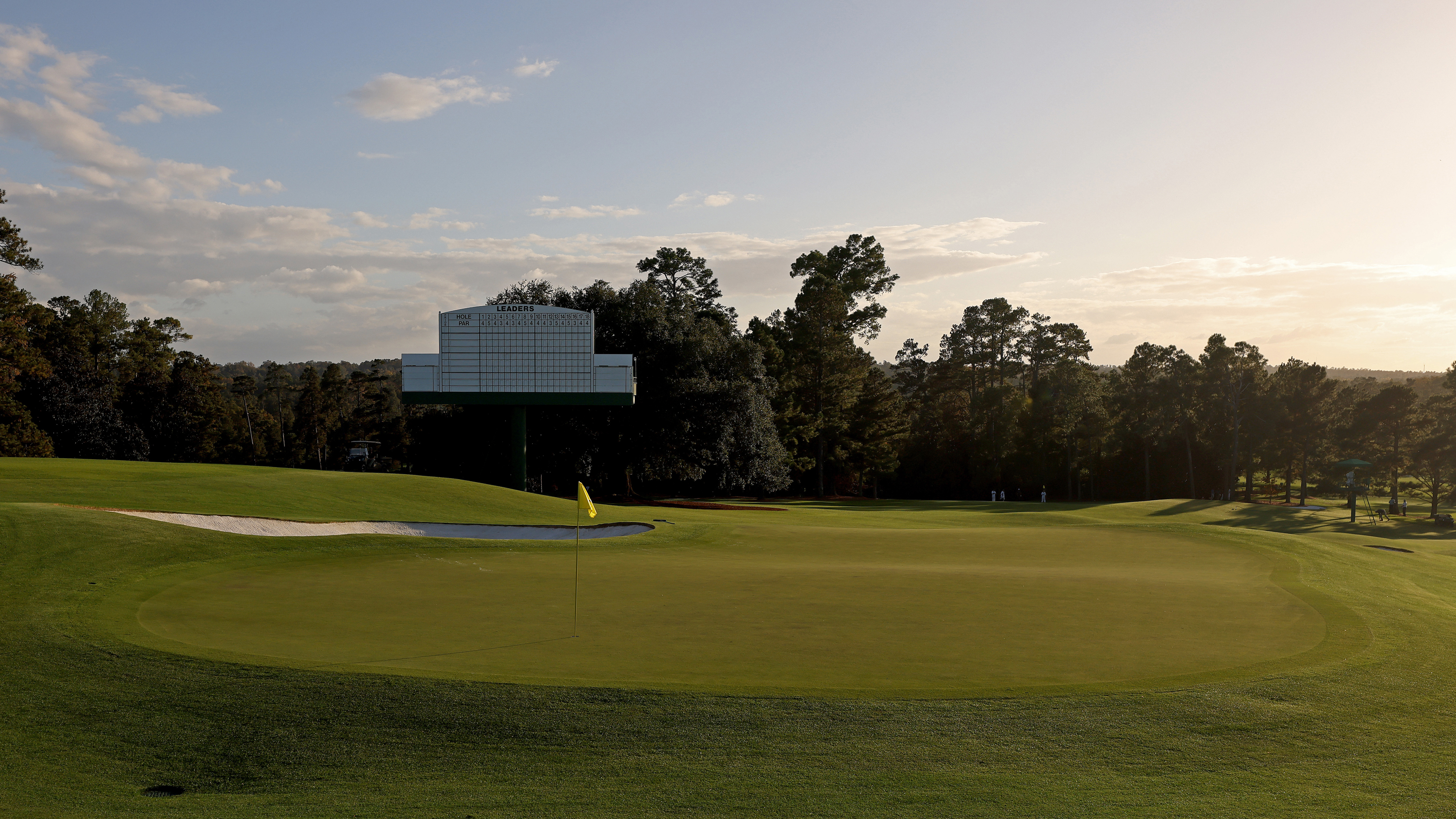
The final green at Augusta
2021 Toughest Day: Round 1 – 4.26, Rank 6th (pin back left)
Easiest Day: Round 4 – 4.06, Rank 12th (pin front left)
The final hole is at its most straightforward when the pin is at the front of the green as the ball will drift back towards it if going slightly long. It was front left for round 4 last year. With everything feeding back toward the hole, it’s a real birdie chance when the pin is at the front – see Sandy Lyle’s bunker shot in 1988.
Conversely, when the pin is up towards the back of the green the challenge is severe and an approach has to be extremely precise to avoid falling away from the cup either short, left or long. When the pin is right to the back of this green, three putts are a common sight. Tom Watson three-putted for a double bogey six here in 1991 to lose out by two to Ian Woosnam.

Fergus is Golf Monthly's resident expert on the history of the game and has written extensively on that subject. He has also worked with Golf Monthly to produce a podcast series. Called 18 Majors: The Golf History Show it offers new and in-depth perspectives on some of the most important moments in golf's long history. You can find all the details about it here.
He is a golf obsessive and 1-handicapper. Growing up in the North East of Scotland, golf runs through his veins and his passion for the sport was bolstered during his time at St Andrews university studying history. He went on to earn a post graduate diploma from the London School of Journalism. Fergus has worked for Golf Monthly since 2004 and has written two books on the game; "Great Golf Debates" together with Jezz Ellwood of Golf Monthly and the history section of "The Ultimate Golf Book" together with Neil Tappin , also of Golf Monthly.
Fergus once shanked a ball from just over Granny Clark's Wynd on the 18th of the Old Course that struck the St Andrews Golf Club and rebounded into the Valley of Sin, from where he saved par. Who says there's no golfing god?